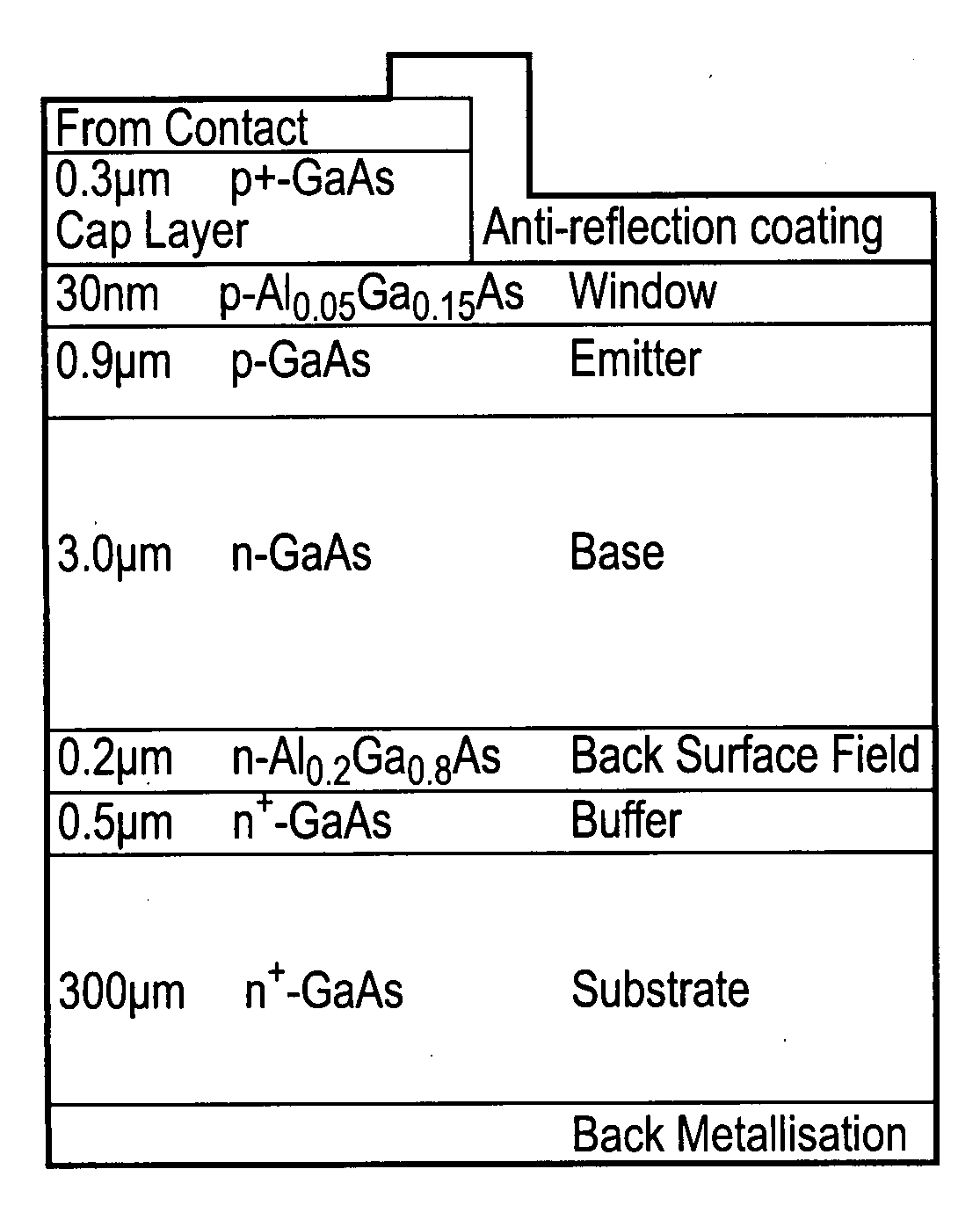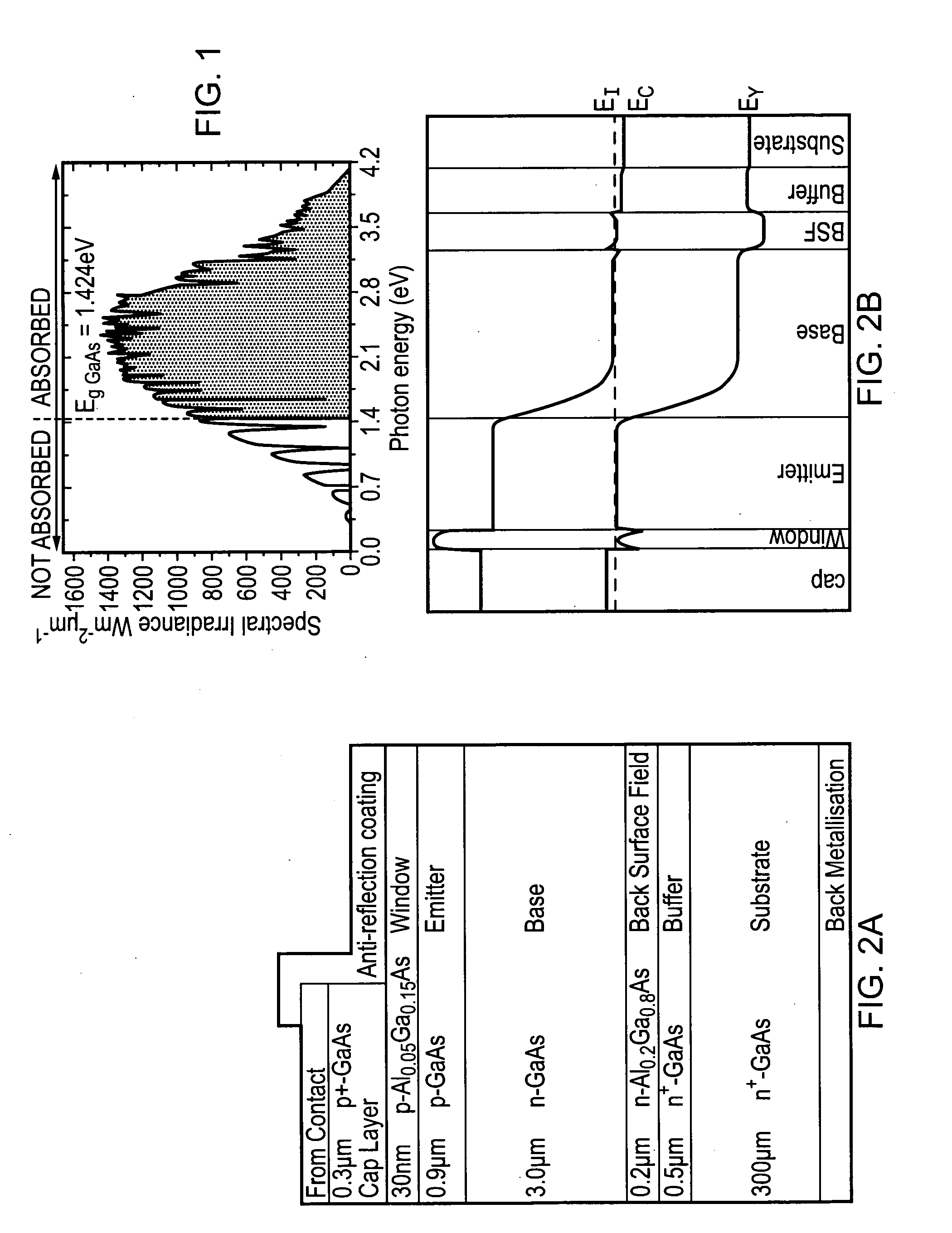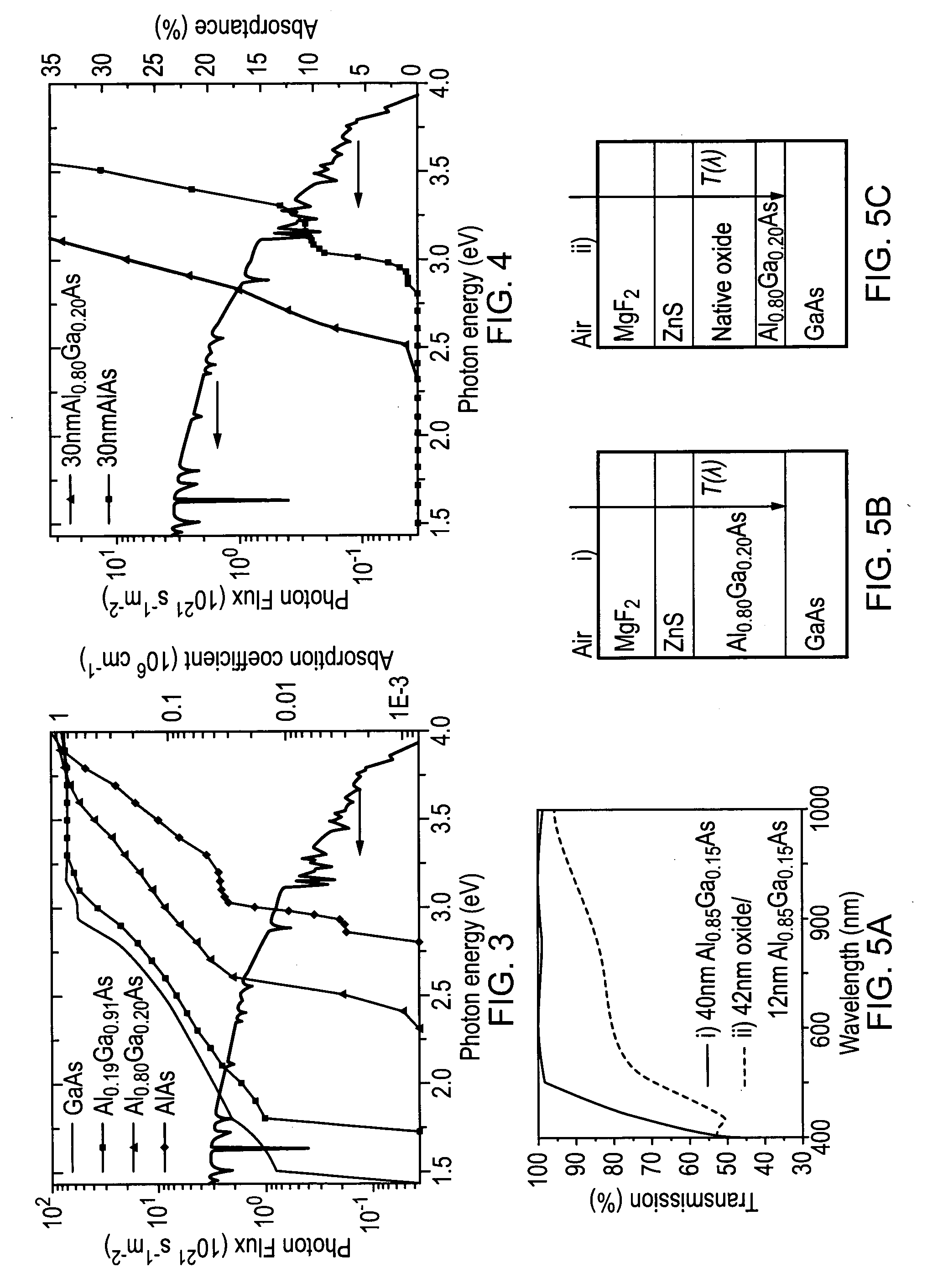Semiconductor optoelectronic devices and methods for making semiconductor optoelectronic devices
a technology of optoelectronic devices and semiconductors, applied in photovoltaic energy generation, energy conversion devices, electrical apparatuses, etc., can solve problems such as degrading the overall quantum efficiency of devices
- Summary
- Abstract
- Description
- Claims
- Application Information
AI Technical Summary
Benefits of technology
Problems solved by technology
Method used
Image
Examples
Embodiment Construction
[0124]As explained above in relation to GaAs-based devices, in terms of the window performance, it is desirable to use a window layer having high aluminium fraction, but this is not generally advisable for practical reasons concerning oxidation / hydrolysis. The present inventors have devised devices and methods of fabrication in which it is possible to suppress exposure of the window layer to oxidizing species. In some preferred embodiments, this is done by ensuring that a protection layer (e.g. GaAs, (AlxGa1-x)0.51In0.49P, AlxGa1-xAs) is maintained to cover the window layer during and after the removal of the contact layer (also referred to herein as “cap layer”).
[0125]In one embodiment, the protection layer itself can be employed as the etch-stop layer in the selective etching process of the cap layer. Alternatively, in another embodiment, a dedicated etch-stop layer is introduced (between the protection layer and cap layer (contact layer)). This etch-stop layer assists in the sele...
PUM
 Login to View More
Login to View More Abstract
Description
Claims
Application Information
 Login to View More
Login to View More - R&D
- Intellectual Property
- Life Sciences
- Materials
- Tech Scout
- Unparalleled Data Quality
- Higher Quality Content
- 60% Fewer Hallucinations
Browse by: Latest US Patents, China's latest patents, Technical Efficacy Thesaurus, Application Domain, Technology Topic, Popular Technical Reports.
© 2025 PatSnap. All rights reserved.Legal|Privacy policy|Modern Slavery Act Transparency Statement|Sitemap|About US| Contact US: help@patsnap.com



